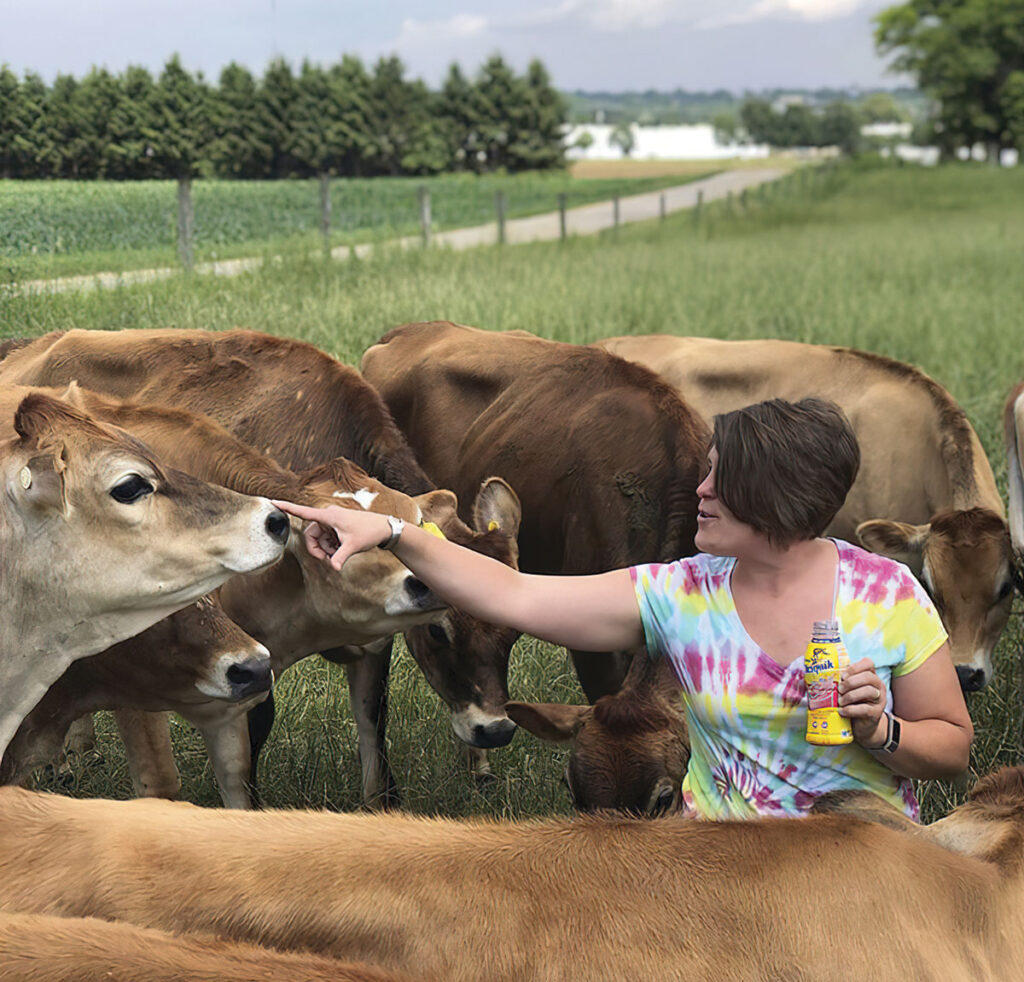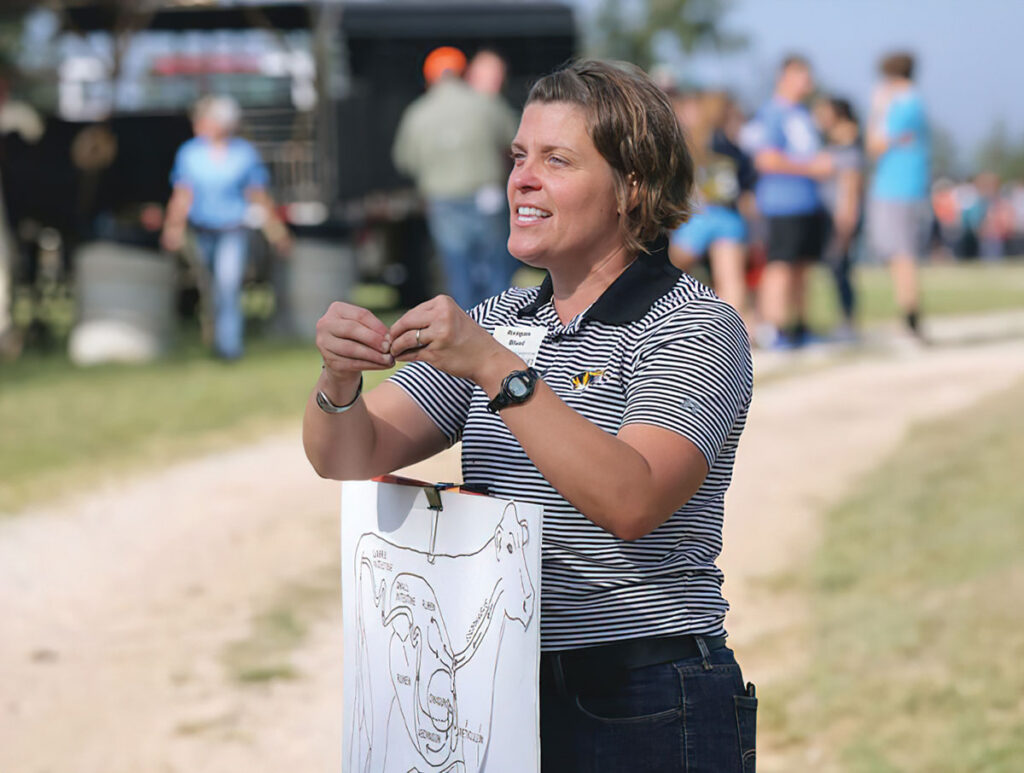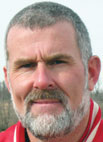
Reagan Bluel once considered vet school, but soon discovered other interests
MONETT, MO. – Reagan Bluel didn’t grow up on a farm, and her high school in La Monte, Mo., didn’t have an FFA Chapter, but Reagan knew she wanted a career working with animals; she just wasn’t sure what direction she wanted to go.
An educator guided her toward the animal-driven career of a veterinarian and suggested she attend the University of Missouri, the closest vet school. From there, she began her journey in agriculture.
“I needed to learn more about ag before I could even consider being a vet. I thought I wanted to be a large animal vet, but as soon as I got into the department of animal sciences, I quickly realized I was much more interested in production agriculture and improving the dairy cow’s health through nutrition rather than always working with sick cows.”
She became involved in the College of Agriculture at the University of Missouri and later graduated with a bachelor’s degree in animal science and a master’s in ruminant nutrition.
Today, Reagan lives on a small farm in Southwest Missouri with her husband Neal Bluel and their two girls Ada (13) and Lily (10), where they raise and custom graze replacement Holstein heifers. She is also a University of Missouri-Extension field specialist in dairy, interim superintendent for the Southwest Research Center, and education director for Missouri Dairy.
Following the completion of her master’s, Reagan went to Columbus, Ohio, to manage the Ohio State Waterman Dairy.
“That was an amazing phase of my life,” Reagan recalled. “The university is in the middle of 1.3 million people, and the dairy is in the center of Columbus surrounded by boulevards. It is 100 percent student-run; then it was myself and one other full-time staff member. We managed 100 Jerseys; my job was to coordinate all the educational efforts of hands-on learning.”
From there, Reagan said it became apparent she needed to be home with her aging parents, and she and decided to pick the family up and move to Southwest Missouri, taking a job as a dairy field specialist in 2014.

“One of my favorite projects with the University of Missouri-Extension has been my Women in Dairy program that’s specific to dairy producers,” Reagan said, adding that dairy is different than any other commodity. “It really is hard for folks to understand the dairy culture unless you’re in it and around it. The development of the Women in Dairy program created a group of women who understood and dealt with daily dairy.”
The group meets for lunch once a month and talks about an emerging topic They also do periodic farm tours, as well as hands-on learning.
“I am highly motivated by watching all the women in ag doing great things,” Reagan said. “I really enjoy how ladies in agriculture build each other up and foster a positive community that transcends multiple states. It is awesome to see across the nation all these ladies in agriculture.”
In August 2020, Reagan was named interim superintendent of MU’s Southwest Research Center, where she oversees and coordinates all efforts of the 893-acre research farm in Mount Vernon, Mo.
“My driving passion for the last year has been making sure that we are providing sound research for southwest Missourians. The research farm is 100-percent dedicated to the land grant mission of teaching, research, and outreach,” Reagan said. “Extension specialists utilize the facilities for teaching, and local producers can trust the data from the research we conduct there because our soil is similar to their soil. The ability to do true agriculture agronomic research in Ozarkian soils is a huge benefit and perk for the University of Missouri to be able to provide that service for Missourians.”
At the center, Reagan and the staff conduct beef cattle research, which for the last three years has included State Beef Specialist Dr. Eric Bailey’s research behind stocker operations and how producers can best manage stockers throughout the year. The goal, Reagan said, is to try to feed them to the 700-pound mark as affordably as possible, so maximizing grass utilization.
“If you can manage your forage, you almost become a grass farmer more than a cattle producer,” Reagan said. “Dr. Bailey is looking set stock versus rotational stock. We are the boots on the ground for Dr. Bailey’s project, conducting the daily care on-site.”
After the third year, they now have a good idea of the profitability margins, which will have great benefits.
“Some of the things we do on the research farm do not always make sense because it always has that research component to it,” Reagan said. “For example, we might run six head of cattle on a 5-acre plot for a period of time so that we can have multiple replications of the same pasture type.”
The center also has many horticulture projects, including nationally-renowned elderberry production and research.
“We also investigate pawpaw production and currently have a tomato research project looking at grafting rootstock and what works better in our Ozarkian soils,” Reagan said.
There is also a high tunnel research facility, which allows them to do a number of vegetable production-type projects working closely with the Extension and Lincoln University.
There is also an extensive walnut grove at the research farm.
“Southwest Missouri is recognized as the home of the black walnut with Hammons Walnut, one of the global leaders for black walnut distribution, located here,” Reagan said. “We also have a pecan grove where we are looking at different organic sprays to see the effectiveness as a fungicide.”
Reagan’s personal passion, however, is animal science and research.
“It’s with great delight to go out there and routinely work with our fall-calving Red Angus herd,” Reagan said. “This year, we have utilized the GrowSafe feed bunks to monitor replacement heifer dry matter intake. It is a unique research project that is a public-private partnership. We have beef producers from across the state who bring their cattle to the research center to determine if their heifer does well in the feed efficiency test.”
In the research herd, the research center is monitoring C-Lock, a pastured device that analyzes the respiration of the animal to determine how much carbon is in its breath.
“When the carbon is expelled in her breath, it is lost, therefore not going toward making meat or milk,” Reagan explained. “We are trying to identify the animals that do a good job of locking carbon into their body, utilizing it for productive potential. If you have an animal that is more efficient with every blade of grass that she eats, then that means that is one less blade of grass she needs to eat to support herself. Those are both cutting-edge projects working on the cow side that could advance our beef herd exponentially.”







